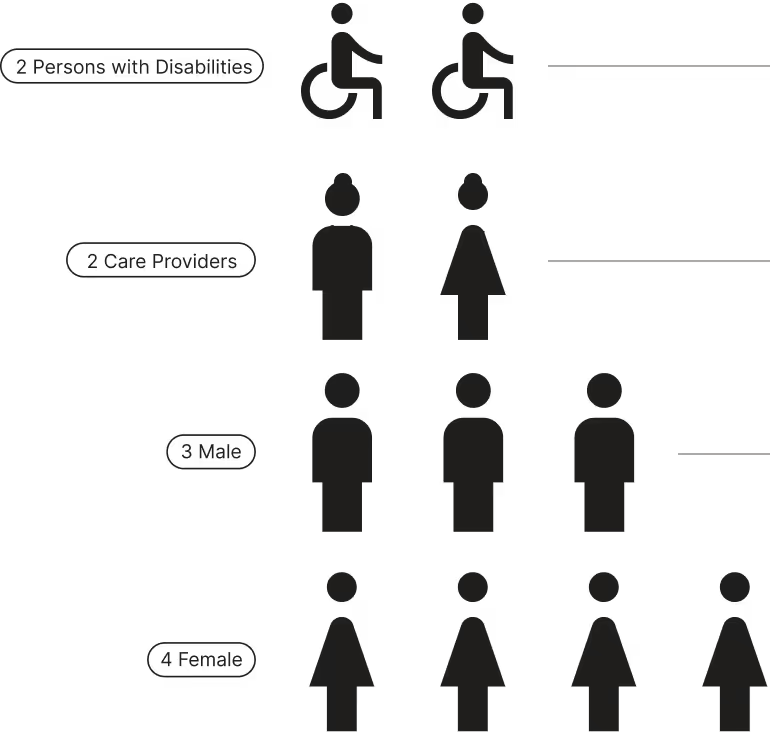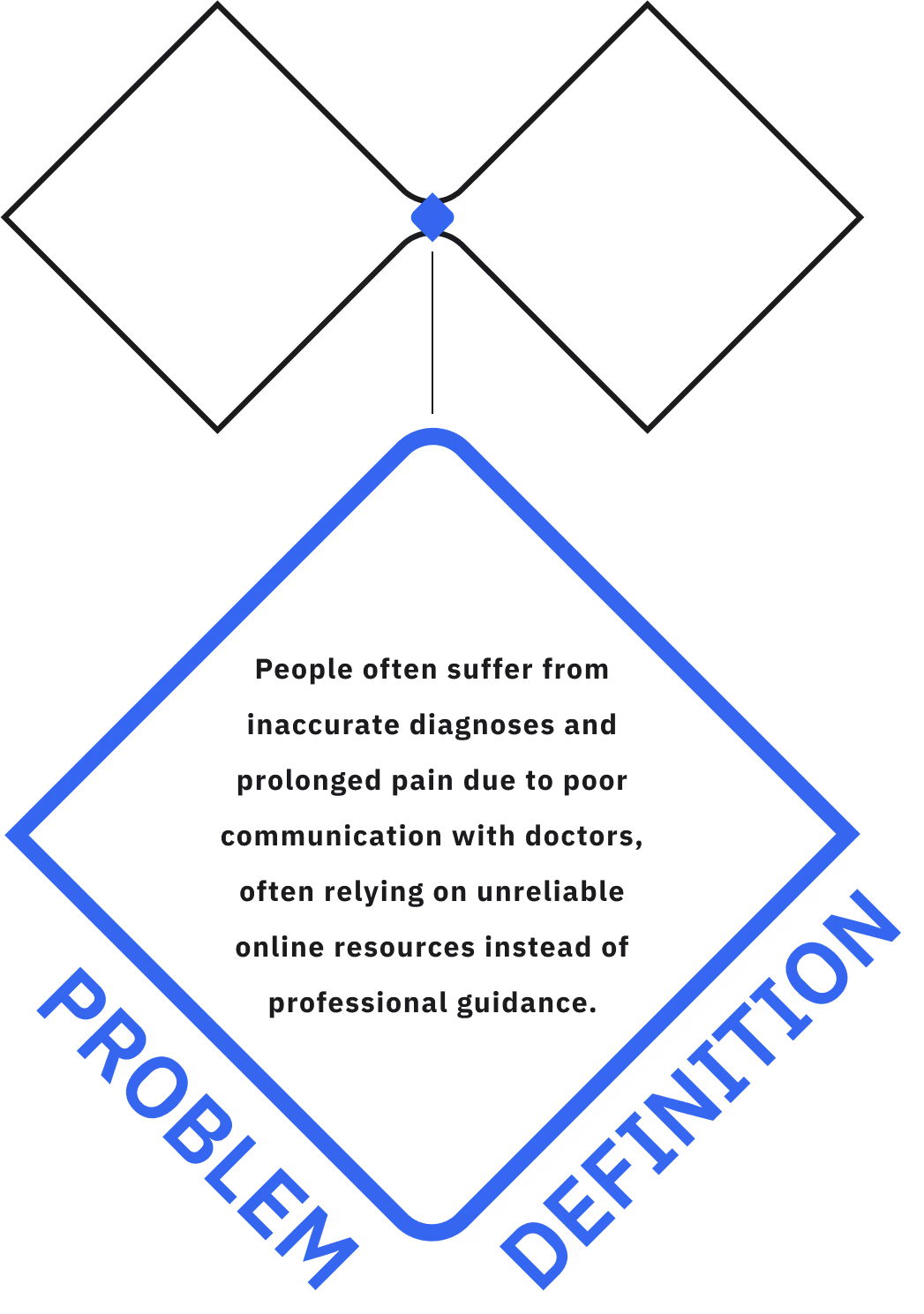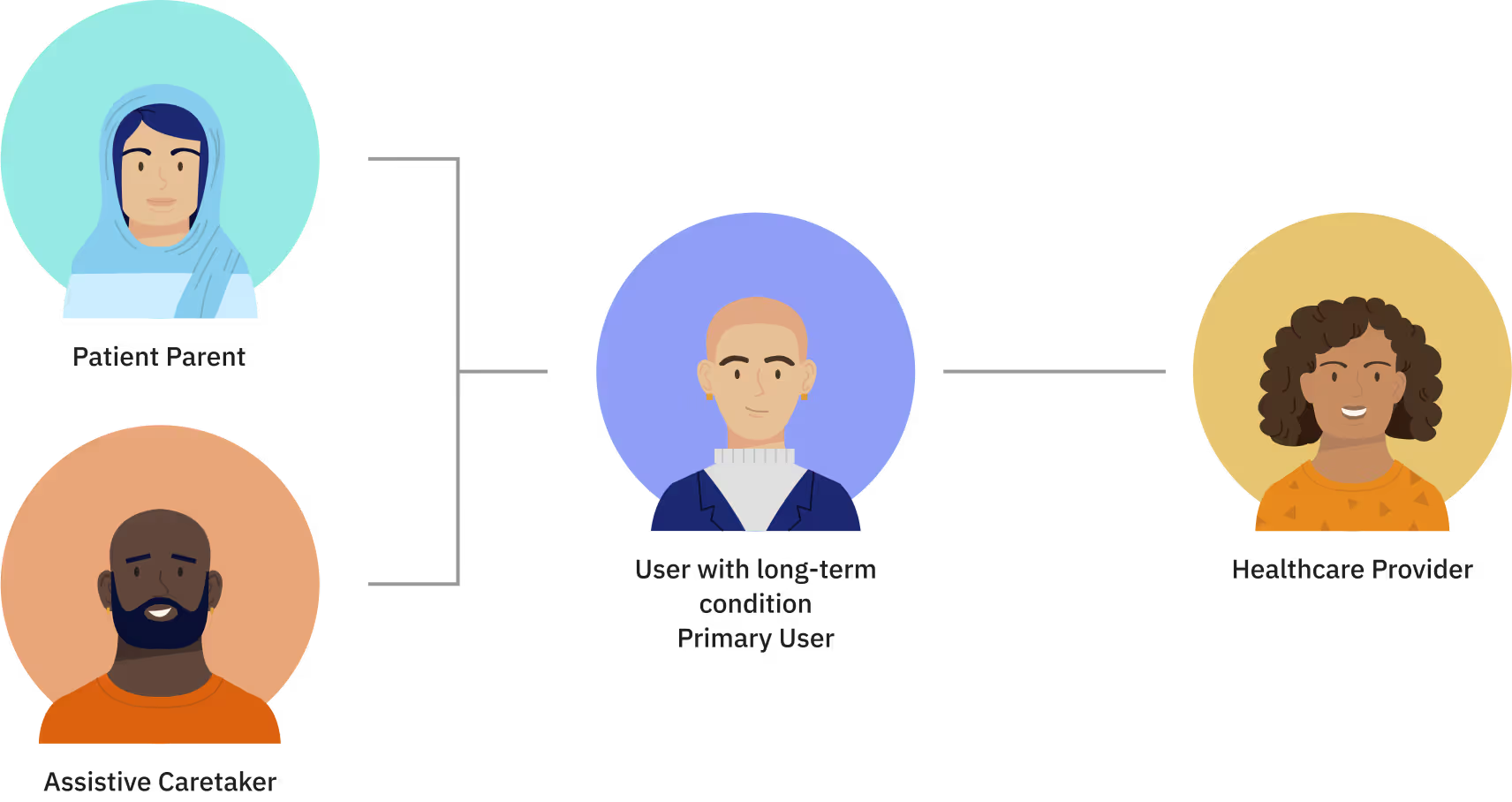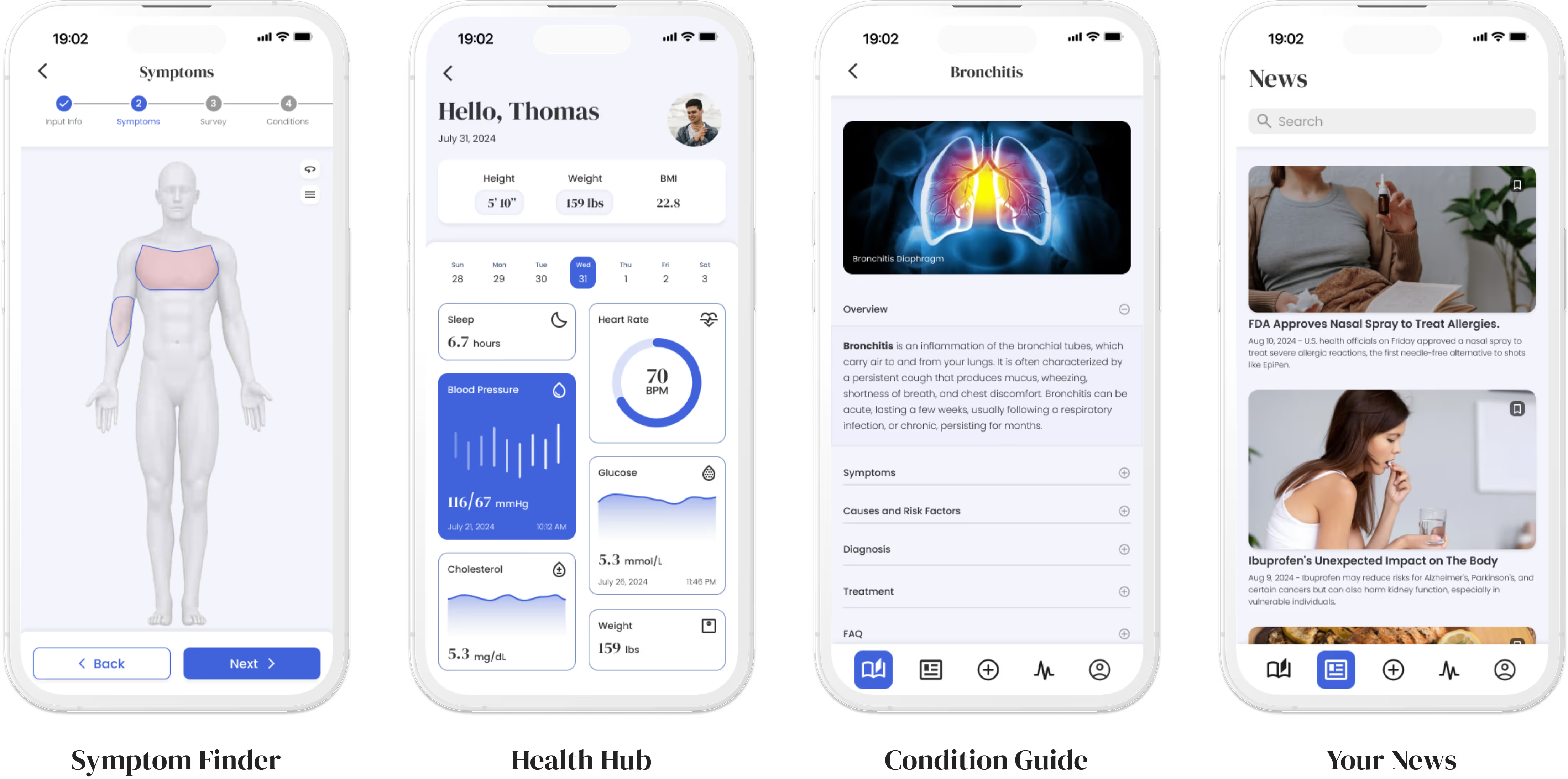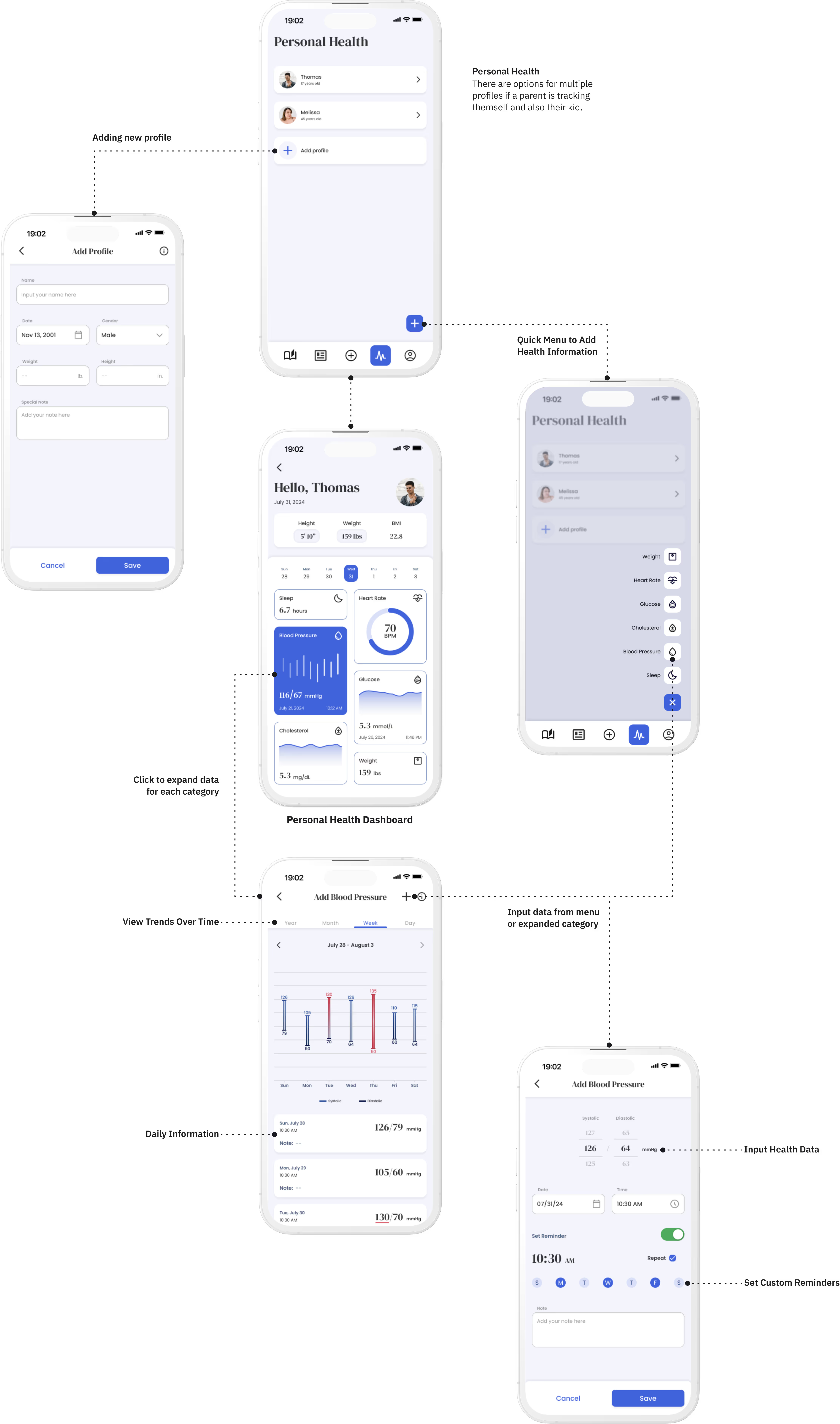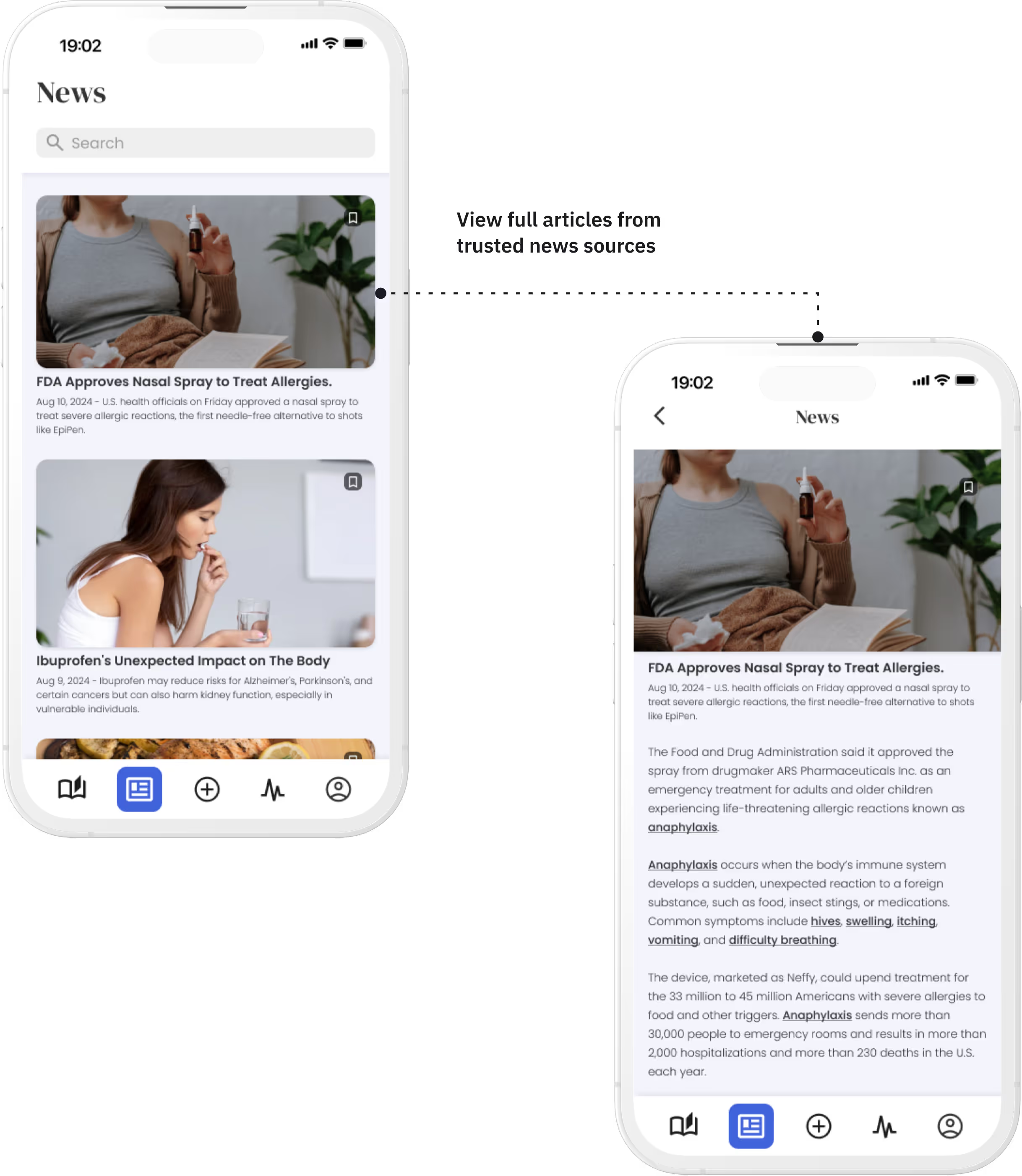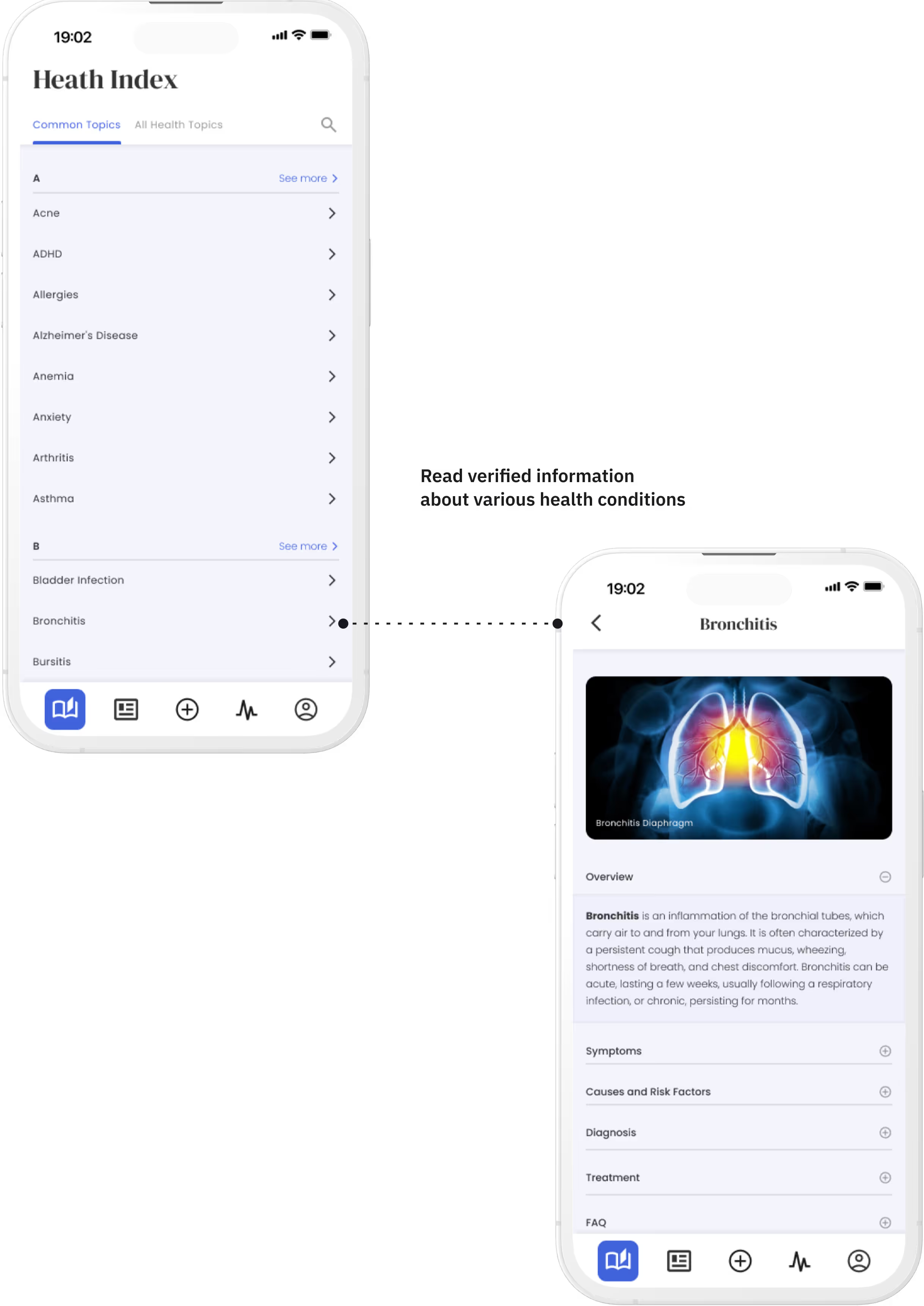The Why
BACKGROUND
Resource: National Library of Medicine
Common Gaps in Healthcare:
People endure distress and misdiagnoses due to inadequate information and communication within the healthcare system.
Need for Convenient Support:
People with long-term pain often resort to online resources rather than their healthcare provider due to the costs and convenience.
Personal Empowerment:
What if there was an app that helped people track symptoms and provide reliable info to empower users managing symptoms?





